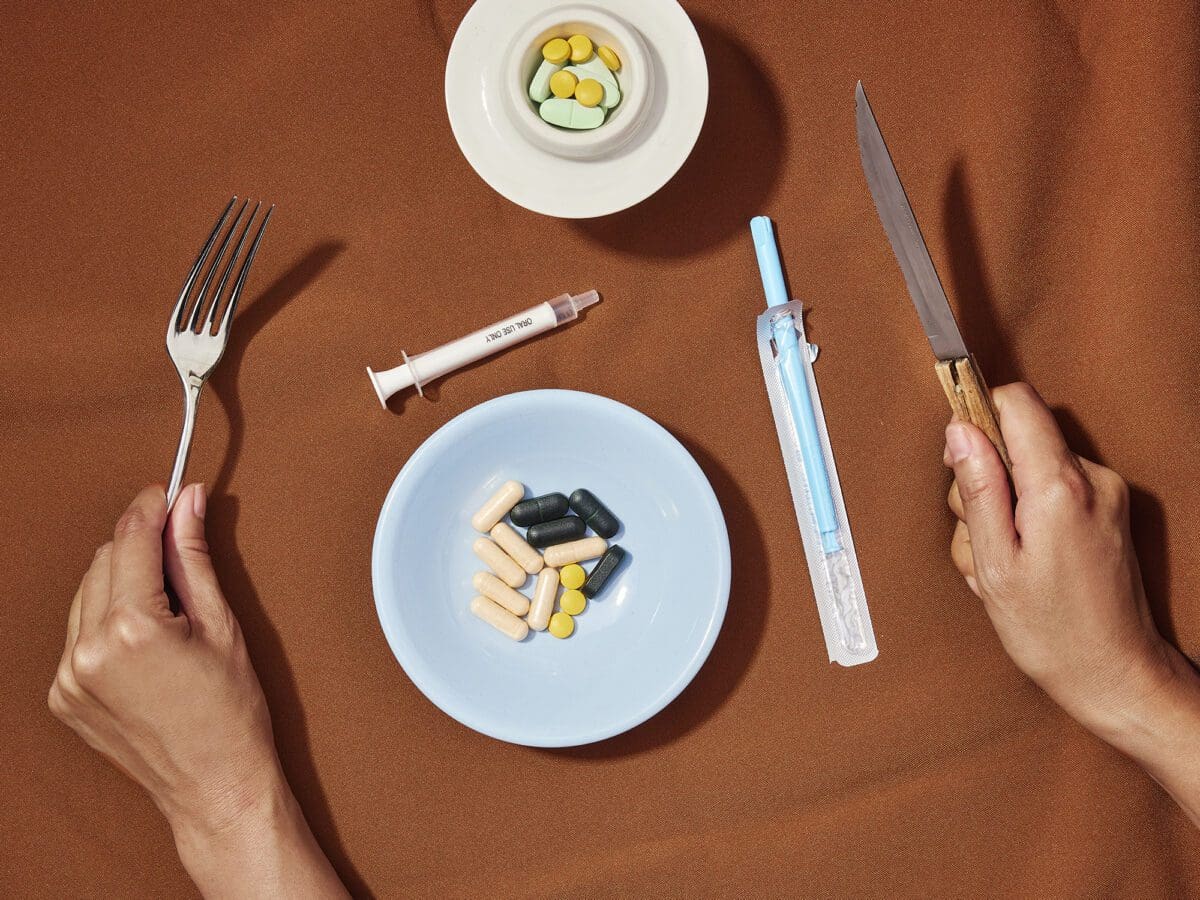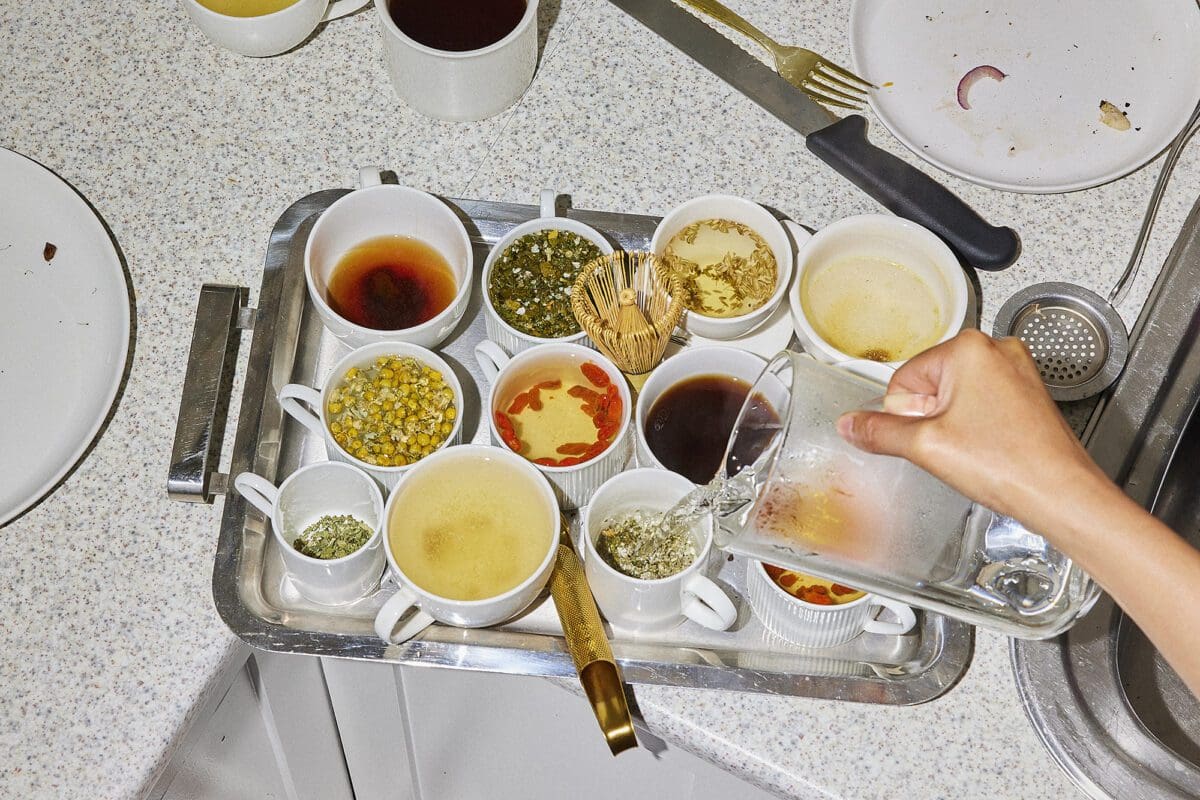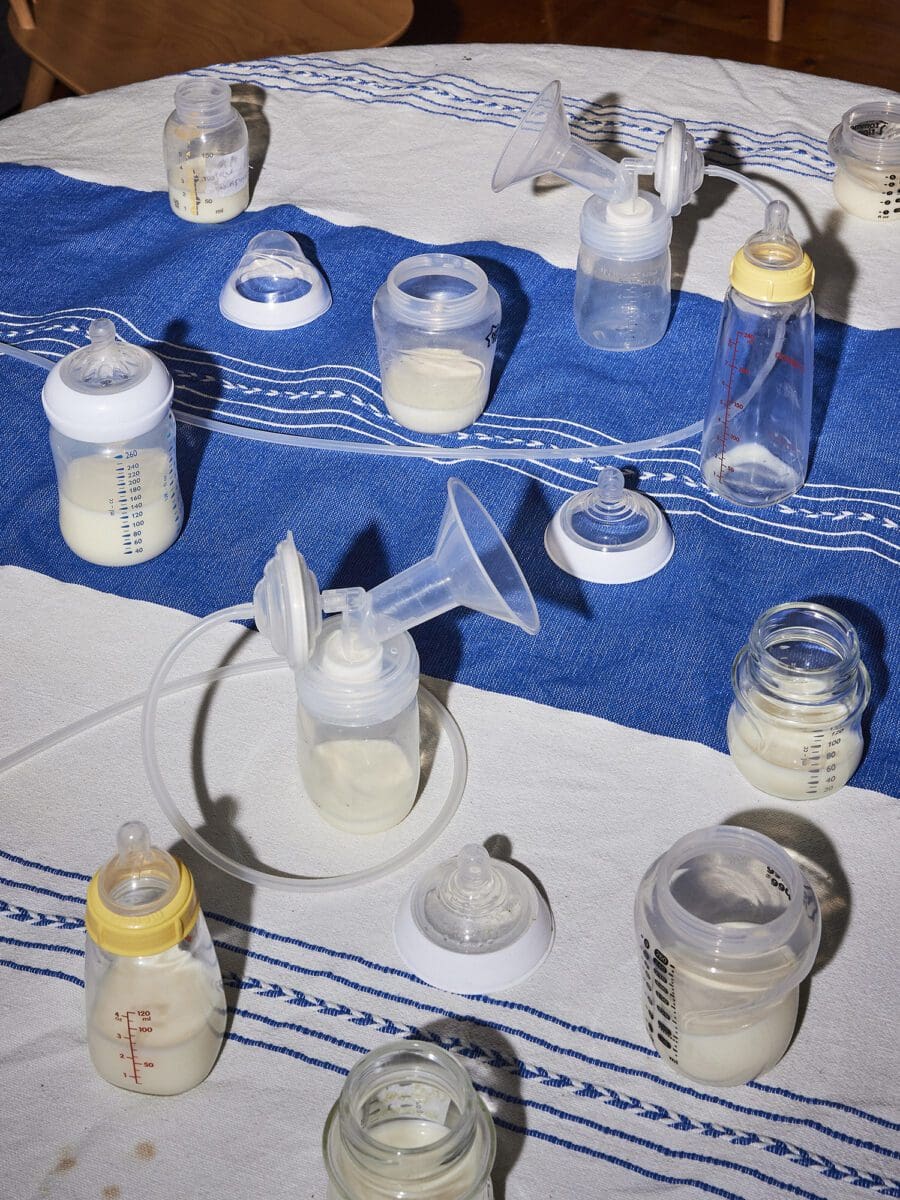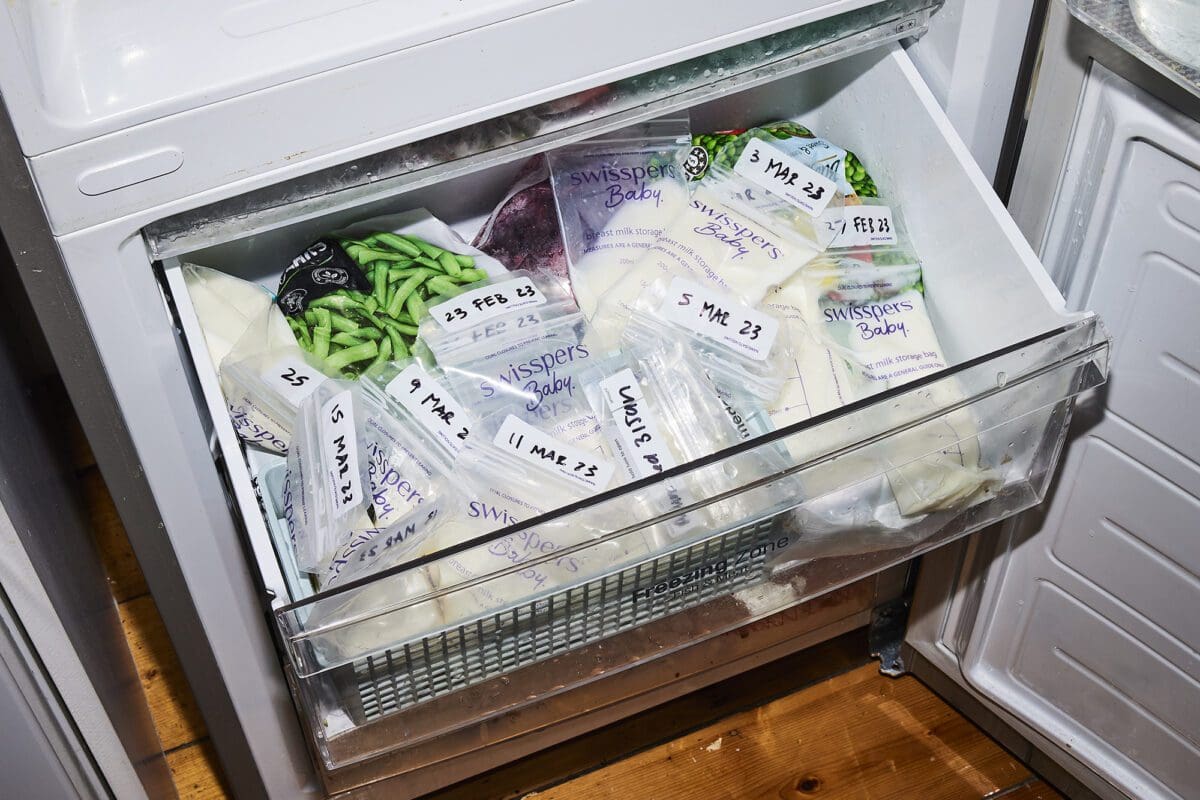
Sophie Penkethman-Young’s Scroll Play
Sophie Penkethman-Young dives into the cursed, chaotic and charming depths of the online world to create inquisitive artworks exploring technology, the internet and capitalism with humour.

Designing Fertility. Photography by Henry Trumble.

Designing Fertility. Photography by Henry Trumble.

Designing Fertility. Photography by Henry Trumble.

Designing Fertility. Photography by Henry Trumble.

Designing Fertility. Photography by Henry Trumble.

Designing Fertility. Photography by Henry Trumble.
Pregnancy and birth, and all the gifts and burdens they bestow, are collective experiences that tend to remain hidden in the privacy of the family home. Far from the frenzied, consumer domains of women’s media and ‘mommy influencers’, they are also resurgent areas of interest for creative workers of all kinds—projects and exhibitions on maternity, inheritance and reproduction, currently abound in galleries.
It seems that both the climate crisis and the pandemic have brought to the fore a long-overlooked truth: the world runs on reproductive labour and care-giving—the ordinary daily work of nurturing humans—which the present economic system treats as a hidden freebie.
Jana Perkovic and Emily Wong both come from a background in editing, arts writing and design research. After working together on Assemble Papers, a journal of critical ideas about housing, they began to organise a series of private food and reading groups called PITH. I spoke with Wong and Perkovic, the latter who is six months postpartum, ahead of the newest iteration of PITH: Designing Fertility.
Taking place at Melbourne Design Week on 27 May, the event looks at how women through the ages modified their fertility, bodies and childbearing capacity by way of ancient recipes, long before the advent of modern contraception. Fertility, the pair argue, has never been primal or natural; rather, we’ve always tampered with it. Combining critical discussion and eating, Designing Fertility will feature talks by a doula, a design researcher, a writer and a midwife, ahead of a selection of snacks featuring abortifacients, aphrodisiacs and emmenagogues that have almost been lost to the past—plants like parsley, pomegranates and dates that hold both medicinal and mythical properties. Beyond Designing Fertility lies a surge of creative activity examining the culture of pregnancy and childbirth, bringing it out of the private sphere and into the public domain.
Lauren Carroll Harris: The pandemic has shown us that science and medicine are both messy and social. Is part of your idea that the supposed science of fertility is often in fact cultural?
Jana Perkovic: We’ve been inspired by quite a liminal, strange food practice. We met up after I gave birth, and I said I really want to do something about all the strange things I ate during pregnancy. I’ve eaten the wildest stuff. This project is very much inspired by my experience of being pregnant in Denmark, where the maternity centres were very carefully designed. And I don’t mean that the hospitals had designer furniture. Every step of the journey was designed very carefully, first of all, to promote the physiology of pregnancy and birth. So, hospitals have oxytocin-promoting lighting. The neonatal unit is designed to have parents there 24/7, supporting skin-on-skin contact and kangaroo care. They were really low-cost interventions, but it was money well spent for what really matters.
Maternity care in Denmark is based on a midwifery model, [where] birth was understood as a social event, it was a very ancient model of care. The obstetric model looks for medical risks: is your blood pressure going up or down? The midwifery model looks for social risks. Is this person well supported in their pregnancy? Is the couple going to be well supported in their journey to becoming a family? So that when your lives are shattered after birth—it’s like a bomb exploding in your life—you’re supported. It was an experience of society where people are supported from the beginning to the end of reproduction. None of this is rocket science, it’s just a very different way of designing services and experiences.
LCH: I’d like to hear more about the intersection of design and fertility—how has fertility been shapeshifted and manipulated?
JP: Across millennia, reproduction was women’s business, and it was intentional. Historically, with the help of midwives and wise women, potions were used to bring on the menses, which also meant abortion, to stave off pregnancies, to be pregnant at the right time. Now we talk about designer babies and choosing to have a Caesarean section, like modern sin[s]. But history is full of examples of women controlling and designing their families, commonly done with food and drink.
LCH: I’m seeing many creative projects relating to food currently. Why this prevalence, do you think?
Emily Wong: Food has become a big topic for the arts. People have seen food as nutritional, as scientific, as the basis of food reviews—but what does it say about us, our agency and the way we behave? Collaborating across disciplines and fields has pushed this too and created the chance to think about food as more than what you eat. Food is so embedded in everything we do, that you can engage any topic through food. The way we engage issues is through our creative practice, and it culminates in these events and the ways of doing that we’re familiar with.
LCH: What have you been thinking about and discovering in terms of rituals and the aesthetic when it comes to birth, fertility and postpartum?
EW: [Birth is commonly] seen as a medical procedure more than an embodied experience. The spatial experience and the experience in time is not what we’re seeing addressed.
JP: Birth is so tremendously driven by a particular hormonal mix. And it has a strong element of the sacred and the ritualistic. Birth is just much bigger than the medical model in which it is being put, and it always will be. Because people share experiences, they share in trying to integrate the enormity of that experience into their life.
It’s really not the right thing to separate the functional and the aesthetic. We know that birth is affected by the aesthetic aspect of the journey. If the birthing person is not feeling supported and warm and safe, the labour is going to stop. There might be more medical interventions. The birth might be traumatic. The bonding, the breastfeeding might be compromised. The whole experience of reproduction is much more than functional or procedural.
I’ve seen birth becoming an obsession in visual art because it’s so gory. And I think this takes us in the wrong direction. Some of the most important designs around birth concern, at the beginning, the policy and service design around fertility, access to IVF, to conception support, and then afterwards, access to well designed parental leave and pumping rooms and so on. This is very unsexy but it’s so crucial to get it right.
LCH: Tell me more about the food element of your event at Melbourne Design Week?
EW: The pomegranate has a history of conflicting knowledges around it. It’s been associated with fertility, as an aphrodisiac, and it’s been classified as a substance that perhaps induces menstruation. The food [at our event] is a provocation for people to talk and interact about their own experiences, including those across cultures. Every culture seems to have this list of things that pregnant people can and can’t eat. I’m Chinese, so we have our own system of things that my mum and aunts have always said you should or shouldn’t have. Jana is Croatian and has her own lineage with those conversations. We have different knowledge systems. Conversation across cultures is part of the idea of the event.
JP: This is something that’s very joyous [for our collaboration]. Emily comes and says, “Let’s talk about foraging in the Middle East as a territorial resistance practice. Let’s talk about the foods that NASA designs for astronauts.” Our research was wild. So many things that you will encounter in your run-of-the-mill pregnancy journey… Like eating dates, that comes from the Quran. Mother Mary goes into labour and an angel comes down and tells her to shake the palm tree and eat the dates that fall.
LCH: And then these cultural myths, passed down through images and texts and rites, become orthodoxy?
JP: Yes. Some of the most fundamental things in medicalised birthing come from completely untested vernacular practices. There’s so much. Did you know that parsley is a very potent abortifacient? A lot of this knowledge was known in the West and was suppressed in the witch hunts and when abortion was criminalised. There was a tremendous amount of effort in making us forget. Serving people food at this event is a way to begin asking what knowledge we have lost about our reproduction and why this has happened.
LCH: The whole culture thrives on open secrets that we’re meant to negotiate individually. What role can the arts play in rethinking reproduction?
JP: [It’s about] taking ‘care work’ out into the open, otherwise it’s taboo in a very strange way. Art is always at the forefront. Art opens up the most difficult questions of our time.